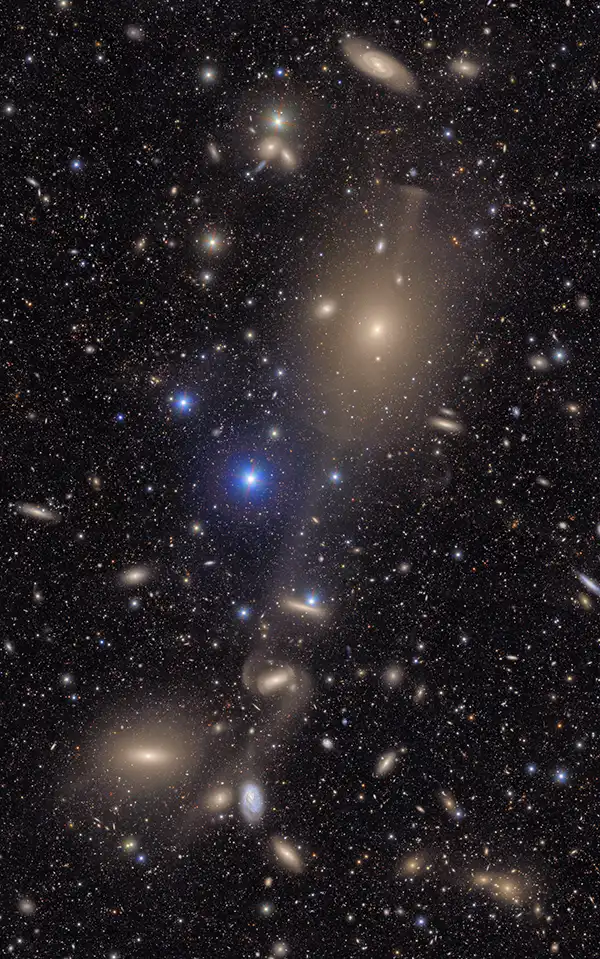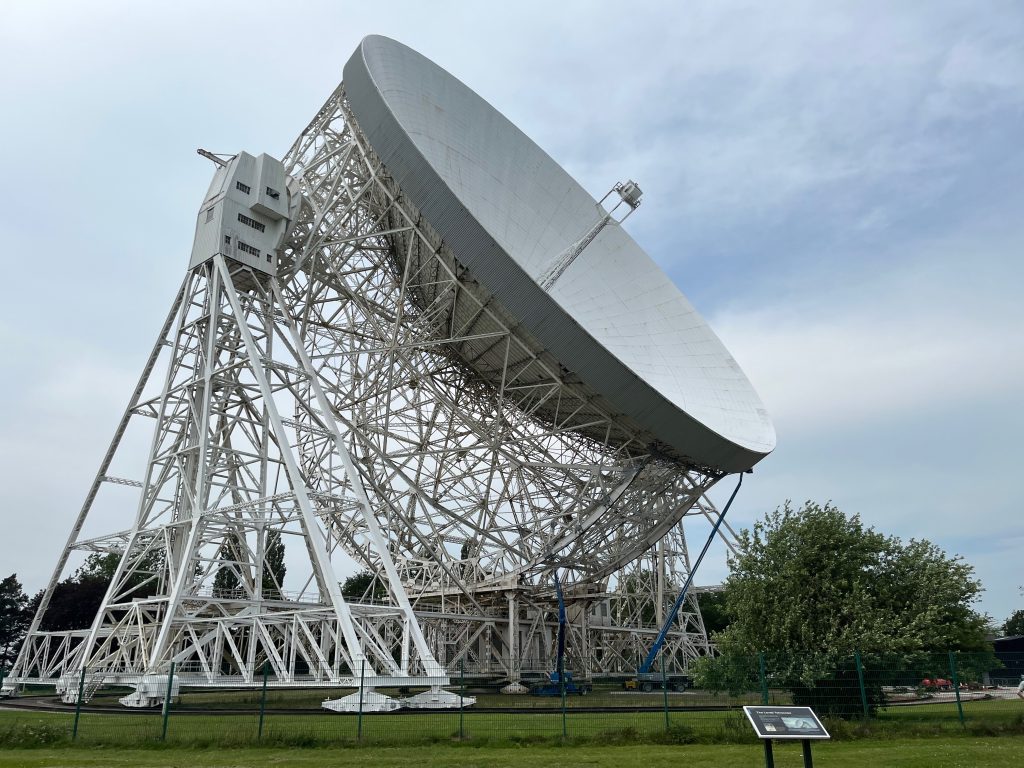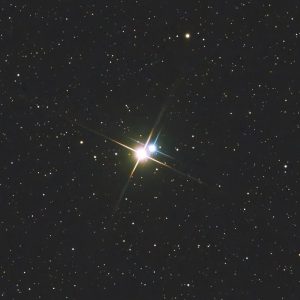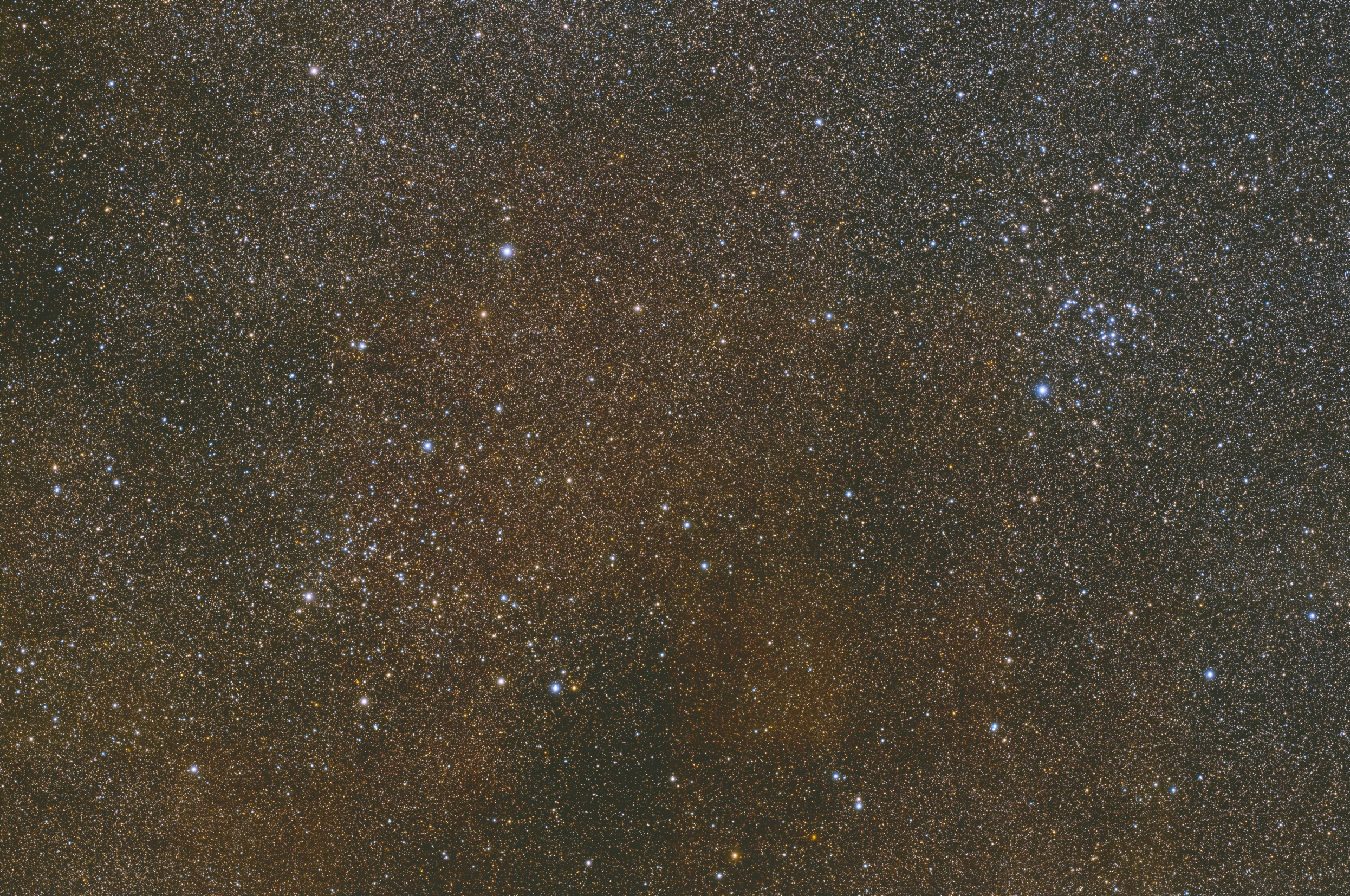2025 July 4
Deep Sky Update – June 2025
Well the solstice has come and gone but at least for me the nights are still very light. In fact it will be sometime in August before any astronomical darkness arrives. I was not actually at home for the solstice this year having had a bit of a road trip to the south of England. The astronomical highlight was a visit to Jodrell Bank and the new First Light exhibition space. The installations here are excellent and well worth a visit, and allow plenty of time if you do go.
Vera RubinTelescope – First Light Images
I am sure everyone will have seen the first light images from the Vera Rubin telescope. Remarkable wide image scale, and detail (even if it cannot resolve a golf ball on the Moon).
Nice to see the Virgo Galaxy Cluster being one of the first released images.

Double Stars for June – Peter Morris
You may recall that I mentioned last month that 70 Ophiuchi has a relatively wide separation (6.9 arcseconds) despite being a binary with a short period of 88.4 years. The solution to this puzzle is that 70 Ophiuchi is quite close to us being 16.6 light years away. This is also the case for 61 Cygni (STF 2758 AB) which admittedly has a longer orbital period of 705 years, but it is even closer still at 11.4 light years distant. Hence it has a wide separation of 32.1 arcseconds. The magnitude of the two stars are 5.4 and 6.1 with a position angle of 154 degrees. The separation is widening at present, but as the period is long, the difference year by year is tiny. They are both K type stars and they are usually seen as a very striking identical tangerine orange. 61 Cygni was of course the first star to have its parallax published, by Friedrich Wilhelm Bessel in 1838. His value of 0.314 arcseconds was excellent given his instrumentation (it equated to 10.3 light years), but it has recently been revised by Gaia to 0.28615 arcseconds. The parallax of Alpha Centauri had been determined by Thomas Henderson at the Cape of Good Hope in 1832, but he was unsure that his figures were correct and only published them in 1839.
Another interesting double in Cygnus suffers from complications over its nomenclature. Omicron1 Cygni is a fairly bright star (magnitude 3.9) which has a very wide companion which is only slightly less bright (mag. 4.8) which is not Omicron2 Cygni as one might expect (Omicron2 Cygni is another star which about a degree from Omicron1) but 30 Cygni (STFA 50 AD). It is thus simpler to call them 31 Cygni and 30 Cygni. The separation is 336.7 arcseconds and position angle is 322 degrees. There is a closer star to 31 Cygni (STFA 50 AC), which is magnitude 7.0 and the separation is 108.6 arcseconds. The position angle is 173 degrees and hence the two companions are 149 degrees apart. The main star is a K type star and is clearly yellow-orange in photographs but I see it as white. The companions are both hot stars—C is a B type star and D is an A type—and unsurprisingly they are both seen as white. It is not certain if they form a binary system or not. According to Gaia EDR3, the main star is 1,118 light years distant, C is almost exactly the same distance and D is 637 light years away, which suggests that AC is a binary and D is a foreground star.
By far the best-known double star in Cygnus is Beta Cygni (STFA 43 AB) or Albireo (a name of uncertain origin but now the formal IAU name for the main star). It is striking that practically everyone agrees about the colour of the two stars. They are universally seen as golden yellow (or even orange) and deep (or cobalt) blue. While they are K type and B type stars and hence these colours are “scientific”, the contrast between doubtlessly deepens the colours—on its own the secondary would probably be seen as silver-blue at best. The main star is magnitude 3.2 and the secondary is 4.7, the separation is 34.6 and the position angle is 54 degrees. The main star has a very close (0.3 arcsecond) companion which can only be observed using speckle interferometry; curiously it is rather similar to the main companion, they are both B type stars and have roughly similar magnitudes (Ac is magnitude 5.9). The big issue with Albireo is whether it is a binary or not. This matters as some observers do not regard optical doubles as being worthy of study (personally I am not all bothered). The Hipparcos mission put the two stars far apart in space, 434 light years for the main star and 401 light years for the companion, implying that the orbital period would be enormous (c. 100,000 years) if they are a binary system. Gaia EDR3 puts the distance of the primary at 363 light years and the secondary at 398 light years (i.e. roughly the same distance apart as Hipparcos, but both stars being closer to us), and the proper motions are very different. Hence it does seems that they are in fact an optical double.
It is a curious fact that the stellar class of the main stars in Albireo and 31 Cygni are both K3 and B of Albireo and C of 31 Cygni are similar, namely B8 and B9; D in the 31 Cygni group is A which is almost as blue. Yet Albireo is seen as golden yellow and cobalt blue, whereas I see all the stars in 31 Cygni as white. I have struggled to find any other observation. Sissy Haas does not list 31 Cygni (or o1 Cygni) and the now archived Top 200 Most Beautiful Double Stars does not list it either. The American double star observer John Nanson (in his Star-Splitter blog) lists the colours as deep gold, bluish-white and white. So why the difference at least for two companions? Does the contrast effect weaken with increasing separation? Certainly, John Nanson’s colours seem to suggest that. What do you see?
If you would like to get in touch with Peter you can email him at doubles@britastro.org
Object of Interest – June
June’s target was the open cluster, IC 4756, or Graff’s cluster, in Serpens. Which makes a nice pair with NGC 6633. Many thanks to Alan Thomas, Iain Cartwright, Ivan Walton, Graham Winstanley, and Manolo Rodriguez who all had a go.
Here is Manolo’s image of the pair with IC 4756 at lower left and NGC 6633 at upper right.
July Object of Interest
For July, Jim has suggested the planetary nebula NGC 6818, the ‘little gem nebula’ in Sagittarius. It’s quite small, so a challenge to bring out much detail, but bright and often colourful in images. As a bonus, it lies within the same wide field as Barnard’s Galaxy NGC 6822, giving a lovely contrast of DSOs.
June Picture of the Month
A great deal to choose from of the objects imaged in June, but my pick for this month is this fine image of the Veil Nebula by Olver Hext using a Redcat 51 and ASI2600 camera.
And Finally…
If the very hot weather continues in England I expect the seeing will not be very good – but if you get a clear, dark night I hope you have some successful observing. As always it’s nice to hear from members so feedback is always welcome.
Clear, dark skies,
Callum
https://britastro.org/wp-content/uploads/2025/07/IMG_4663-scaled.jpeg
https://britastro.org/wp-content/uploads/2025/07/NSF-DOE-Rubin-Virgo-cluster-1-Im3crop1.webp
| The British Astronomical Association supports amateur astronomers around the UK and the rest of the world. Find out more about the BAA or join us. |




